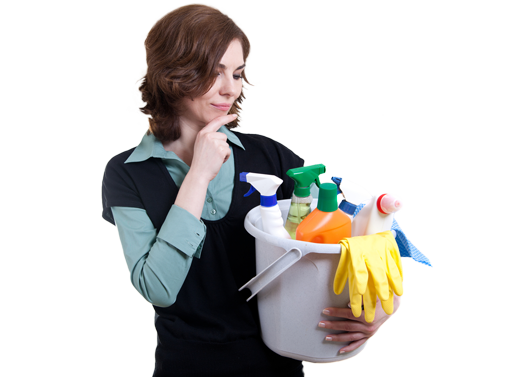Air Quality: Protecting Your Family's Health
Posted on 30/05/2025
Air Quality: Protecting Your Family's Health
Air quality is a crucial yet often overlooked factor influencing your family's well-being. Every day, we breathe in thousands of liters of air, often without giving it a second thought. However, the state of the air we inhale can have a profound impact on our health--especially for children, elderly family members, and those with pre-existing health conditions.
Understanding Air Quality and Its Importance
The quality of the air both inside and outside your home plays a decisive role in your family's health. Poor air quality can lead to a variety of health problems, ranging from minor irritations to serious diseases. Understanding the sources of air pollution and how to safeguard your home is essential for family health protection.
What Is Air Quality?
Air quality is typically measured by the concentration of pollutants in the atmosphere. The Air Quality Index (AQI) is a standardized scale used worldwide to inform communities about current pollution levels and safety measures.
- Good air quality promotes an active, healthy lifestyle and reduces the risk of disease.
- Poor air quality can contribute to both short-term and long-term health complications.

Common Air Pollutants Affecting Family Health
Indoor and outdoor airflow carries a mix of pollutants--some visible, some microscopic. Being aware of these airborne hazards helps in making informed choices for your family's protection.
Outdoor Air Pollutants
- Particulate Matter (PM2.5 & PM10): Tiny particles from vehicles, factories, and natural sources can penetrate deep into the lungs.
- Ozone (O3): Ground-level ozone forms from the reaction of sunlight with pollutants. It's known for causing respiratory issues.
- Nitrogen Dioxide (NO2): Emitted from cars and power plants, leading to increased asthma attacks and other lung diseases.
- Sulfur Dioxide (SO2): Produced by burning fossil fuels, aggravates respiratory conditions.
- Carbon Monoxide (CO): A colorless, odorless gas from incomplete combustion, potentially causing deadly poisoning.
Indoor Air Pollutants
- Volatile Organic Compounds (VOCs): Gases emitted by paints, cleaning products, and building materials.
- Secondhand Smoke: A major contributor to indoor air pollution, especially dangerous for children.
- Mold and Mildew: Can grow in damp areas, releasing spores that trigger allergies and asthma.
- Pet Dander: Tiny flecks of skin shed by pets can worsen air quality for sensitive individuals.
- Cooking Fumes: Especially from frying or roasting, release fine particles and VOCs.
Health Risks of Poor Air Quality
Prolonged exposure to pollutants can trigger a range of health issues, particularly for vulnerable family members. Below are some of the critical health risks:
Short-Term Effects
- Irritation of the eyes, nose, and throat
- Headaches, dizziness, and fatigue
- Exacerbation of allergies and asthma symptoms
- Respiratory infections
Long-Term Effects
- Chronic respiratory diseases such as asthma and bronchitis
- Cardiovascular diseases
- Lung cancer
- Developmental problems in children
- Worsened outcomes for those with heart or lung conditions
Children, pregnant women, the elderly, and individuals with pre-existing diseases are at higher risk and require special attention when considering air quality protection strategies.
How to Check the Air Quality in Your Area
Staying informed about air quality levels in your community can help you make healthier decisions. Use these resources:
- Government websites: EPA's AirNow.gov provides real-time AQI data for the United States.
- Weather apps: Many smartphones feature AQI tracking as part of their weather applications.
- Home air quality monitors: These devices offer precise measurements for inside your home, detecting VOCs, PM, CO2, and more.
Interpreting the Air Quality Index
- 0-50 (Good): Air quality is satisfactory, posing little to no risk.
- 51-100 (Moderate): Quality is acceptable, but some pollutants may be a concern for sensitive groups.
- 101-150 (Unhealthy for Sensitive Groups): People with breathing or heart issues, children, and older adults should reduce outdoor activities.
- 151-200 (Unhealthy): Everyone may begin to experience health effects; sensitive groups are more seriously affected.
- 201-300 (Very Unhealthy): Health alert; increased risk for everyone.
- 301-500 (Hazardous): Severe health warnings; emergency conditions.
Tips to Improve Indoor Air Quality to Safeguard Your Family
Even if outdoor air is poor, maintaining a healthy indoor environment is possible. Consider the following steps:
Ventilation Is Vital
- Open windows and doors when outdoor air quality permits
- Use exhaust fans in kitchens and bathrooms
- Regularly check and clean air ducts and filters
Limit Indoor Pollutants
- Avoid smoking indoors--designate specific outdoor smoking areas
- Use fragrance-free and low-VOC cleaning products and paints
- Store chemicals and pesticides outside living areas
- Maintain low humidity levels to deter mold growth
- Clean and vacuum frequently, using a HEPA-filter vacuum
Invest in Air Purification
- Use HEPA air purifiers in living rooms and bedrooms
- Maintain HVAC systems and replace filters regularly
- Add houseplants; certain types help absorb toxins, though they are not substitutes for proper ventilation
Monitor Carbon Monoxide
- Install CO detectors in bedrooms and hallways
- Service fuel-burning appliances regularly
Simple Habits to Maintain Clean Air at Home
- Remove shoes at the door to prevent bringing in outdoor pollutants
- Groom pets regularly to reduce dander
- Fix leaks and sources of dampness promptly to deter mold
- Avoid idling cars in attached garages
- Opt for natural ventilation whenever possible and safe
By adopting these habits, you can create a healthier living environment and protect your family's respiratory health year-round.
Special Attention: Vulnerable Family Members
The effects of bad air quality are especially harmful to children, the elderly, those with asthma, and pregnant women. Consider the following tips:
- Keep vulnerable individuals inside when outdoor air quality is poor
- Create a dedicated "clean room" with an air purifier during extreme pollution days
- Monitor symptoms closely and seek medical advice if breathing problems worsen

Frequently Asked Questions about Air Quality and Health
What are the signs of poor indoor air quality?
- Frequent headaches or dizziness
- Persistent sneezing, coughing, or allergies
- Musty or chemical odors lingering indoors
- Visible mold or excessive dust buildup
How often should I replace air filters?
Most experts recommend changing HVAC filters every 1-3 months. HEPA air purifier filters may last 6-12 months, but always follow manufacturer guidelines.
Are air purifiers effective against viruses and bacteria?
High-quality HEPA filters can trap airborne viruses and some purifiers feature UV-C or ionizing technologies that further reduce microorganisms. For ultimate protection, combine air purification with frequent cleaning and handwashing.
The Future of Air Quality and Family Health
As awareness grows, new technologies and regulations continue to improve environmental and indoor air quality. Community initiatives, green construction, and smart home devices are all part of a proactive strategy to shield your family from air pollution hazards.
Key Takeaways for Safeguarding Your Family's Health:
- Stay informed about local air conditions and respond accordingly
- Promote ventilation and reduce indoor pollution sources
- Use air purifiers and routinely service HVAC systems
- Pay extra attention to children, elderly, and those with existing health conditions
- Establish clean home habits for long-term respiratory health
By making informed choices and adopting preventative habits, you can significantly improve your family's air quality and lay the groundwork for a healthier future. Safe, clean air is not just a privilege--it's a necessity for every household. Start today and take meaningful steps to protect your family's health.





